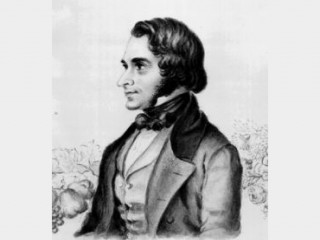
Andrew Jackson Downing biography
Date of birth : 1815-10-31
Date of death : 1852-07-28
Birthplace : Newburgh, New York
Nationality : American
Category : Arhitecture and Engineering
Last modified : 2010-12-03
Credited as : Landscape architect, horticulturist,
American horticulturist and landscape architect Andrew Jackson Downing was interested in all aspects of nature and how people might gain pleasure and benefit from it.
Andrew Jackson Downing was born at Newburgh, N.Y., on Oct. 31, 1815; he remained a lifelong resident there. His father was a wheelwright and later a nurseryman. He had little formal education but learned a good deal from reading, corresponding with innumerable professional horticulturists in America and abroad, and his own keen observation. When the father died in 1822, the eldest son took over the nursery business, later joined by Andrew. In 1837 Andrew bought his brother's share of the business. The following year he married Caroline E. DeWint, a grandniece of President John Quincy Adams.
For the next 14 years Downing improved his knowledge of horticulture by study and long, observant walks in the nearby hills. He published the results of his research in the horticultural magazines of Europe and the United States and in his several books. The Treatise on the Theory and Practice of Landscape Gardening (1841) introduced him to the American public, which gradually came to consider Downing the leading authority on the subject. He frequently received commissions for landscape projects, even from the Federal government. When his book reached England, it was highly praised.
Downing's interest in the art of landscaping led him to inquire into the relationship of the countryside to the country house and vice versa, so that several of his later books are important for their theories on architectural style. Always deeply concerned with nature, Downing thought of houses as a part of nature, and he designed them to fit their surroundings. Cottage Residences (1842) was the first of Downing's writings to assert that the house must fit its site.
In 1845 Downing returned to a strictly horticultural work, The Fruits and Fruit Trees of America, a popular book that went through many editions and contributed to his prestige as a pomologist. The next year he became editor of a newly founded magazine, Horticulturist. Returning to architecture again, he published Additional Notes and Hints to Persons about Building in This Country (1849). His most important book on architecture, Architecture of Country Houses, was published in 1850. In that same year Downing traveled to England, where he saw the great gardens and country landscapes he had known only from books. On his return to America he enlisted the services of Calvert Vaux as his business partner in landscape and architectural commissions. In 1851 they worked on the U.S. Capitol and the White House grounds and on estates on Long Island and in the Hudson River valley.
Downing's death on July 28, 1852, while escorting his wife and others on a boat ride down the Hudson River, is a story of heroism and tragedy. The boat caught fire from engines overheated by its negligent captain, who was attempting to outrace another boat to New York City. As people jumped overboard, Downing threw chairs to them as life preservers, and he was evidently swallowed by the river as he tried to save those unable to swim.
The memoir by George W. Curtis in Downing's posthumously published Rural Essays (1853) is a fine but typically 19th-century character sketch. George B. Tatum's introduction to a recent edition of Downing's Architecture of Country Houses (1968) gives additional information. Downing's work is also discussed in Marie Luise Gothein, A History of Garden Art, vol. 2 (trans. 1928).
Downing, A. J. (Andrew Jackson), Pleasure grounds: Andrew Jackson Downing and Montgomery Place, Tarrytown, N.Y.: Sleepy Hollow Press, 1988.
Schuyler, David, Apostle of taste: Andrew Jackson Downing, 1815-1852, Baltimore: Johns Hopkins University Press, 1996.
















